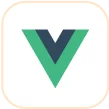Trusted by the world’s leading companies

Overview
Angular Range Selector is an interface for selecting a small range from a larger collection. It is commonly used in financial dashboards to filter a date range for data that needs to be visualized.
Angular Range Selector Code Example
Easily get started with the Angular Range Selector using a few simple lines of ts code as demonstrated below. Also explore our Angular Range Selector Example that shows you how to render and configure the Range Selector in Angular.
import { Component, ViewEncapsulation } from '@angular/core';
@Component({
selector: 'app-container',
// specifies the template string for the RangeNavigator component
template: `<ejs-rangenavigator id="rn-container"></ejs-rangenavigator>`
encapsulation: ViewEncapsulation.None
})
export class AppComponent { }Data types
Plot any type of data in the range selector using different value types like numeric, date-time, and logarithmic.
Chart types
Plot data in the range selector with different chart types like line, area, and step line.
Lightweight
Skip the chart and show only the range for selecting data. This makes the range selector lightweight in mobile devices.
Scales
Major and minor scales display the range with different intervals and are placed at multiple levels of the range selector. A date-time scale can also be configured to be shown in major and minor scales.
Period Selector
Select data using predefined periods in the range selector and use the date picker to select a custom range.
Binding selected data
Bind selected data from the range selector to any other data visualization control using built-in events.
Deferred scrolling
Allows you to defer the selected range to be updated until the user stops dragging the scrolling thumbs. This provides a smooth scrolling experience.

Range selection
The range selector control provides the following three ways to select a range:
- Select a range through labels.
- Drag the left and right thumbs.
- Drag the selected range to maintain the same delta.
Customization
All the elements of the range selector are highly customizable with built-in APIs.

Labels
Customize the size, color, font family, font attribute, and alignment of the labels using built-in APIs.

Thumbs
Customize the appearance of the left and right thumbs using built-in APIs.

Gridlines
Customize the color, stroke width, dash array, and visibility of the major and minor gridlines using built-in APIs.
Tooltip
Tooltips display the start and end values of a selected range, allowing users to easily select a required range.
RTL
The range selector supports right-to-left rendering and allows the series and scale direction to be displayed from the right to left. This improves the user experience and accessibility of RTL languages.
Touch and Browser support
The interactive range selector control also support touch interactions.

Touch support
All the features in range selector will work on touch devices with zero configuration. Use the touch features such as tooltip and thumb drag without any customization.

Responsive
You can view the range selector on various devices. It is also possible to hide chart for particular screen sizes by making a very minimal change.

Cross browser support
You can render range selector control in all the modern browsers.
Other supported frameworks
The Range Selector is available for the Blazor, React, JavaScript, and Vue frameworks. Explore its platform-specific options through the following links:
Supported browsers
The Angular Range Selector works well with all modern web browsers, including Chrome, Firefox, Edge, Safari, and Opera.

Not sure how to create your first Angular Range Selector? Our documentation can help.
I’d love to read it now145+ ANGULAR UI COMPONENTS
Frequently Asked Questions
Why should you choose the Syncfusion Angular Range Selector?
The Syncfusion Angular Range Selector supports the following features:
A modern interface for quickly selecting a time-period to filter data for in-depth analysis.
- Integration with Charts, DataGrid, ListView, and other Syncfusion controls to visualize filtered data.
- Responsive design that adapts the control’s UI to any mobile device.
- One of the best Angular Range Selector in the market that offers feature-rich UI to interact with the software.
- Simple configuration and API.
- Support for all modern browsers.
- Mobile-touch friendly and responsive.
Extensive demos and documentation to learn quickly and get started with the Angular Range Selector component.
Where can I find the Syncfusion Angular Range Selector demo?
You can find our Angular Range Selector demo, which demonstrates how to render and configure the Range Selector.
Can I download and utilize the Syncfusion Angular Range Selector for free?
No, this is a commercial product and requires a paid license. However, a free community license is also available for companies and individuals whose organizations have less than $1 million USD in annual gross revenue, 5 or fewer developers, and 10 or fewer total employees.
How do I get started with Syncfusion Angular Range Selector?
A good place to start would be our comprehensive getting started documentation.
Our Customers Love Us


 Figma Download
Figma Download
Awards
Greatness—it’s one thing to say you have it, but it means more when others recognize it. Syncfusion® is proud to hold the following industry awards.

















